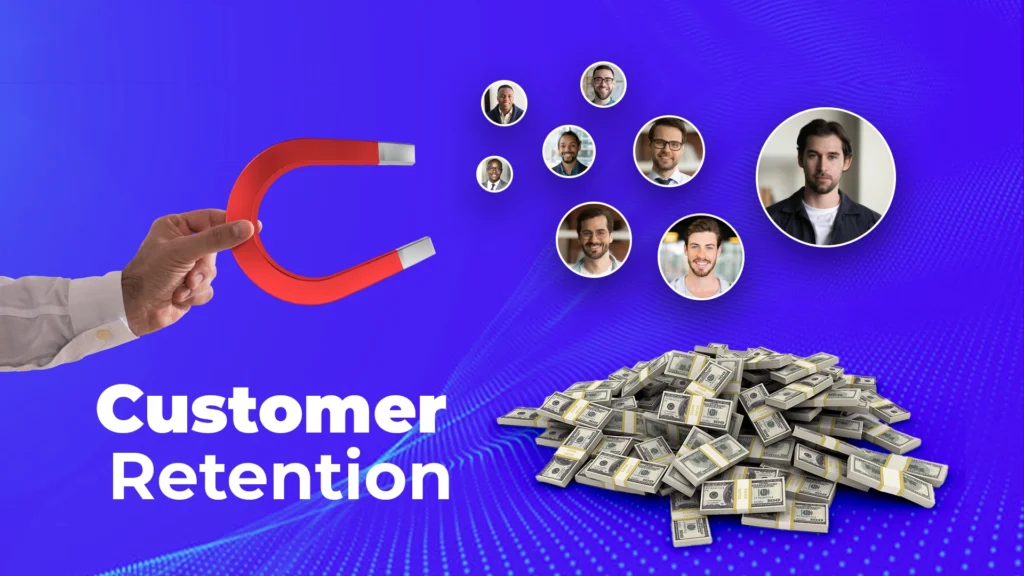
CRM Marketing Mastery: Strategies for Customer Retention and Business Growth
In the ever-evolving landscape of business, where customer relationships are the lifeblood of success, mastering CRM marketing and customer retention is not just advantageous; it’s essential. This comprehensive guide delves deep into the intricacies of CRM (Customer Relationship Management) marketing, exploring its crucial role in fostering lasting customer loyalty and driving sustainable business growth. We’ll dissect the core principles, strategies, and practical applications of CRM, providing you with the knowledge and tools to transform your customer interactions from transactional exchanges into meaningful, long-term relationships.
Understanding the Foundation: What is CRM Marketing?
At its core, CRM marketing is a strategic approach that leverages customer relationship management (CRM) systems and data to understand, engage, and retain customers. It’s about more than just collecting customer information; it’s about using that information to personalize interactions, anticipate needs, and deliver exceptional experiences. CRM marketing goes beyond traditional marketing methods by focusing on building relationships, fostering loyalty, and driving repeat business. It’s about treating each customer as an individual, understanding their unique preferences, and tailoring your marketing efforts to meet their specific needs.
Think of it as a sophisticated conversation. Instead of shouting generic messages into the void, CRM marketing allows you to listen, understand, and respond in a way that resonates with each customer. This personalized approach not only enhances the customer experience but also significantly improves the effectiveness of your marketing campaigns, leading to higher conversion rates, increased customer lifetime value, and ultimately, a more profitable business.
Key Components of CRM Marketing
- Data Collection and Management: Gathering and organizing customer data from various sources, including website interactions, purchase history, social media activity, and customer service interactions.
- Customer Segmentation: Dividing your customer base into distinct groups based on demographics, behavior, preferences, and other relevant factors.
- Personalized Marketing Campaigns: Creating targeted marketing messages and offers tailored to the specific needs and interests of each customer segment.
- Automation and Workflow Management: Automating repetitive tasks, such as email marketing, lead nurturing, and customer service follow-up, to improve efficiency and streamline processes.
- Analytics and Reporting: Tracking and analyzing key performance indicators (KPIs) to measure the effectiveness of your CRM marketing efforts and identify areas for improvement.
The Power of Customer Retention: Why it Matters
In the competitive business world, acquiring new customers can be costly and time-consuming. Customer retention, on the other hand, is a far more efficient and sustainable way to drive business growth. Retaining existing customers not only generates repeat revenue but also fosters brand loyalty, positive word-of-mouth referrals, and valuable feedback that can be used to improve your products and services. The benefits of customer retention are numerous and far-reaching.
Key Benefits of Customer Retention
- Increased Profitability: Retained customers tend to spend more over time, leading to higher profitability.
- Reduced Costs: It’s typically less expensive to retain an existing customer than to acquire a new one.
- Enhanced Brand Loyalty: Loyal customers are more likely to advocate for your brand and recommend it to others.
- Valuable Feedback: Retained customers provide valuable feedback that can be used to improve your products and services.
- Predictable Revenue Streams: Customer retention leads to more predictable revenue streams, making it easier to forecast future growth.
Strategies for Effective CRM Marketing and Customer Retention
Implementing a successful CRM marketing strategy requires a multifaceted approach that encompasses data collection, customer segmentation, personalized marketing campaigns, and ongoing engagement. Here are some key strategies to help you achieve your customer retention goals:
1. Understand Your Customers
The foundation of any successful CRM marketing strategy is a deep understanding of your customers. This involves collecting comprehensive customer data, analyzing their behavior, and identifying their needs and preferences. Use your CRM system to gather data from various sources, including website interactions, purchase history, social media activity, and customer service interactions. Segment your customer base based on demographics, behavior, and other relevant factors to create targeted marketing campaigns that resonate with each customer group.
Ask yourself questions like: Who are our most valuable customers? What are their pain points? What motivates them to make a purchase? What channels do they prefer to use? The more you know about your customers, the better equipped you’ll be to create personalized experiences that foster loyalty.
2. Personalize Your Marketing Efforts
Generic marketing messages are a thing of the past. Today’s customers expect personalized experiences that cater to their individual needs and preferences. Use your CRM data to personalize your marketing campaigns, tailoring your messages, offers, and content to each customer segment. Address customers by name, recommend products based on their past purchases, and send targeted emails that are relevant to their interests.
Personalization goes beyond just using a customer’s name in an email. It’s about understanding their journey, anticipating their needs, and providing them with relevant information and offers at every stage of the customer lifecycle. This could include sending a welcome email to new subscribers, offering exclusive discounts to loyal customers, or providing personalized product recommendations based on their browsing history.
3. Provide Exceptional Customer Service
Exceptional customer service is a cornerstone of customer retention. When customers have a positive experience with your brand, they’re more likely to stick around. Train your customer service team to be friendly, helpful, and responsive. Provide multiple channels for customers to contact you, such as email, phone, live chat, and social media. Resolve customer issues quickly and efficiently, and always go the extra mile to exceed their expectations.
Customer service is not just about resolving problems; it’s about building relationships. Encourage your customer service representatives to build rapport with customers, show empathy, and actively listen to their concerns. A positive customer service experience can turn a dissatisfied customer into a loyal advocate for your brand.
4. Implement Loyalty Programs
Loyalty programs are a powerful tool for rewarding loyal customers and encouraging repeat business. Offer exclusive discounts, rewards, and benefits to your most valuable customers. Make it easy for customers to earn and redeem rewards, and provide them with regular updates on their progress. Loyalty programs not only incentivize repeat purchases but also create a sense of community and belonging among your customers.
Consider tiered loyalty programs that offer increasing rewards based on customer spending or engagement. This can motivate customers to spend more and become even more loyal to your brand. Make sure your loyalty program is easy to understand and use, and that the rewards are valuable and relevant to your customers’ needs.
5. Proactively Engage with Your Customers
Don’t wait for customers to come to you; proactively engage with them. Send regular newsletters, promotional emails, and personalized offers. Engage with your customers on social media, responding to their comments and messages promptly. Encourage customer feedback and use it to improve your products and services. The more you engage with your customers, the stronger your relationships will become.
Consider using automated email marketing campaigns to nurture leads, onboard new customers, and re-engage inactive customers. This can help you stay top-of-mind and keep your customers engaged with your brand. Make sure your engagement efforts are genuine and add value to the customer experience.
6. Analyze and Optimize Your CRM Marketing Efforts
CRM marketing is an ongoing process, not a one-time event. Regularly analyze your CRM data to track your progress, identify areas for improvement, and optimize your marketing efforts. Track key performance indicators (KPIs) such as customer acquisition cost, customer lifetime value, churn rate, and customer satisfaction. Use this data to make informed decisions about your marketing strategy and ensure that you’re achieving your customer retention goals.
A/B test different marketing messages, offers, and content to see what resonates best with your customers. Continuously monitor your customer feedback and use it to improve your products, services, and customer experience. CRM marketing is a dynamic process that requires constant refinement and optimization.
Choosing the Right CRM System
Selecting the right CRM system is crucial for the success of your CRM marketing efforts. There are numerous CRM systems available, each with its own strengths and weaknesses. Consider your business needs, budget, and technical capabilities when choosing a CRM system. Look for a system that offers the features you need, such as data collection and management, customer segmentation, personalized marketing automation, analytics, and reporting.
Key Features to Consider When Choosing a CRM System
- Data Integration: The ability to integrate with other business systems, such as your website, e-commerce platform, and social media channels.
- Scalability: The ability to scale as your business grows.
- User-Friendliness: An intuitive interface that is easy to use and navigate.
- Reporting and Analytics: Robust reporting and analytics capabilities to track your progress and measure your results.
- Automation: Automated workflows to streamline your marketing and sales processes.
- Mobile Accessibility: The ability to access your CRM data from anywhere, on any device.
Real-World Examples of Successful CRM Marketing and Customer Retention
Many businesses have successfully implemented CRM marketing and customer retention strategies to drive growth and build lasting customer relationships. Here are a few examples:
Amazon
Amazon is a master of CRM marketing. They use their vast customer data to personalize product recommendations, send targeted emails, and offer exclusive discounts to their Prime members. Their loyalty program, Amazon Prime, encourages repeat purchases and creates a sense of community among their customers.
Starbucks
Starbucks uses its mobile app and loyalty program to gather customer data, personalize offers, and reward loyal customers. They also use the app to provide a seamless ordering experience and offer exclusive benefits to their rewards members. This has resulted in a highly engaged customer base and a significant increase in repeat business.
Netflix
Netflix uses its CRM system to analyze customer viewing habits and personalize recommendations. They also use data to tailor their marketing messages and content to each subscriber’s interests. This personalized approach helps them retain subscribers and keep them engaged with their platform.
Challenges and How to Overcome Them
While CRM marketing and customer retention offer significant benefits, there are also challenges to overcome. Here are some common challenges and how to address them:
Data Quality Issues
Poor data quality can undermine your CRM marketing efforts. Inaccurate, incomplete, or outdated data can lead to ineffective marketing campaigns and a poor customer experience. To overcome this challenge, invest in data cleansing and validation processes. Regularly review and update your customer data, and implement data governance policies to ensure data accuracy and consistency.
Lack of Integration
If your CRM system isn’t integrated with other business systems, such as your website, e-commerce platform, and social media channels, you may miss out on valuable data and insights. Ensure that your CRM system integrates seamlessly with all your other systems. This will allow you to gather a comprehensive view of your customers and personalize your marketing efforts more effectively.
Resistance to Change
Implementing a CRM system and changing your marketing practices can be challenging, particularly if employees are resistant to change. To overcome this challenge, provide adequate training and support to your employees. Communicate the benefits of CRM marketing and customer retention, and involve your employees in the implementation process. Get buy-in from key stakeholders and make sure everyone understands the importance of the initiative.
Measuring ROI
Measuring the return on investment (ROI) of your CRM marketing efforts can be challenging. However, it’s essential to track your progress and demonstrate the value of your investments. Establish clear KPIs and track them regularly. Use analytics tools to measure the impact of your marketing campaigns on customer acquisition, retention, and revenue. This will help you justify your investments and make data-driven decisions.
The Future of CRM Marketing and Customer Retention
The future of CRM marketing and customer retention is bright, with new technologies and trends emerging. Here are some of the key trends to watch:
Artificial Intelligence (AI)
AI is poised to revolutionize CRM marketing. AI-powered tools can analyze vast amounts of customer data to identify patterns, predict behavior, and personalize marketing messages. AI can also automate repetitive tasks, such as email marketing and lead nurturing, freeing up marketers to focus on more strategic initiatives.
Hyper-Personalization
Customers are increasingly demanding personalized experiences. CRM marketing will continue to evolve towards hyper-personalization, with marketers using data to create highly targeted and relevant marketing messages and offers. This will involve using AI and machine learning to understand individual customer preferences and tailor experiences accordingly.
Omnichannel Marketing
Customers interact with brands across multiple channels, including email, social media, websites, and mobile apps. Omnichannel marketing involves providing a seamless and consistent customer experience across all channels. CRM systems will need to integrate with all these channels to provide a unified view of the customer and ensure a consistent brand experience.
Customer Data Platforms (CDPs)
CDPs are becoming increasingly popular as a way to collect, manage, and activate customer data. CDPs provide a centralized platform for collecting data from various sources, unifying it, and creating customer profiles. This data can then be used to personalize marketing campaigns and improve customer experiences.
Conclusion: Embrace the Power of CRM Marketing
In conclusion, CRM marketing and customer retention are no longer optional; they are critical components of any successful business strategy. By understanding your customers, personalizing your marketing efforts, providing exceptional customer service, implementing loyalty programs, proactively engaging with your customers, and analyzing your results, you can build lasting customer relationships, drive repeat business, and achieve sustainable business growth. Embrace the power of CRM marketing and unlock the full potential of your customer relationships.

